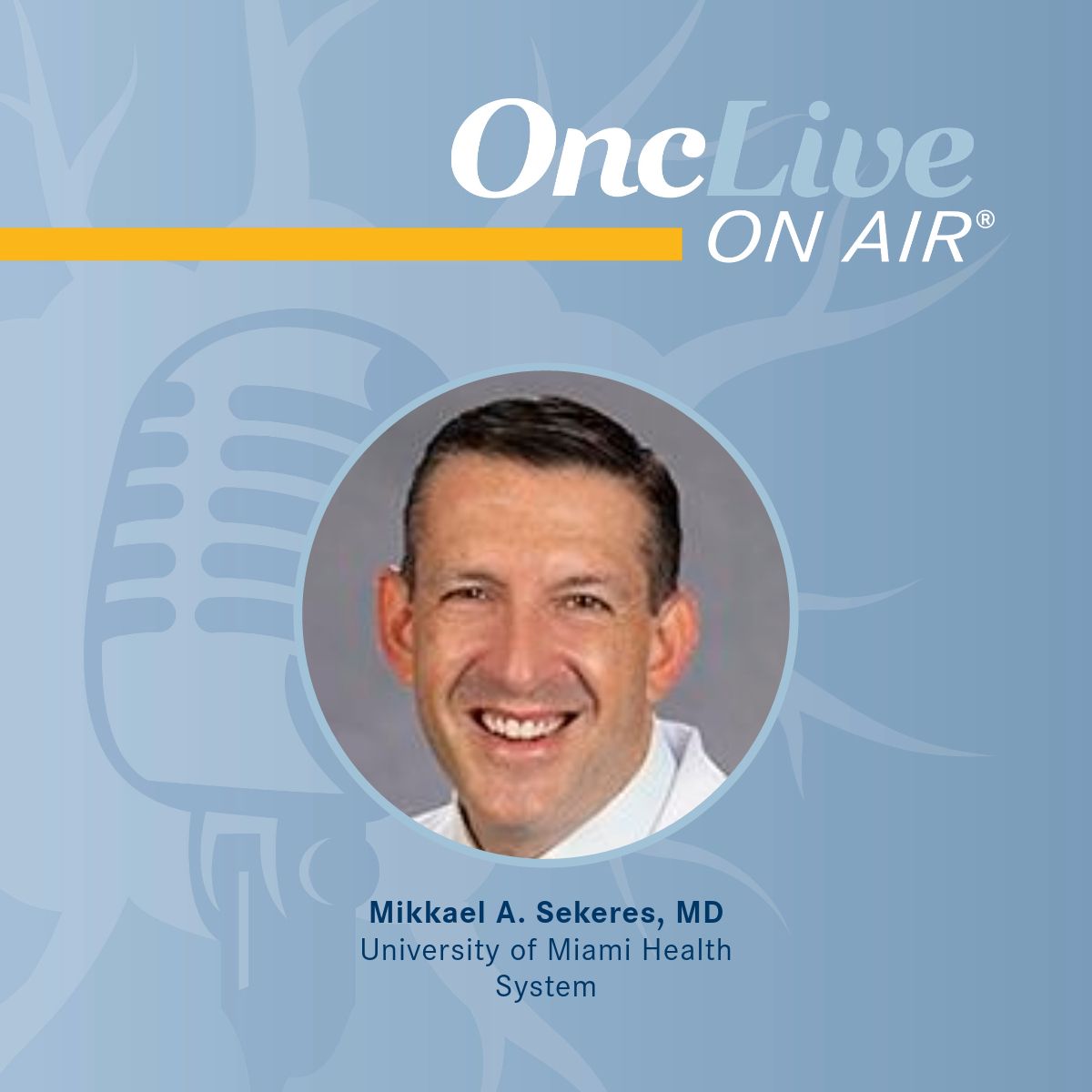News
Article
Four-Drug Regimens Escalate the SOC for Newly Diagnosed Multiple Myeloma
C. Ola Landgren, MD, PhD, highlights how therapeutic improvements with quadruplet regimens will benefit all patients with newly diagnosed multiple myeloma.
C. Ola Landgren, MD, PhD

Several positive clinical trials have demonstrated the benefits of using quadruplet regimens in the treatment of patients with newly diagnosed multiple myeloma, building on the established efficacy of triplet regimens to provide even greater survival benefits, according to C. Ola Landgren, MD, PhD.
In an interview with OncLive® during the 2024 ASCO Annual Meeting, Landgren highlighted his thought process when deciding between triplet and quadruplet regimens for patients with newly diagnosed multiple myeloma; how therapeutic improvements benefit all newly diagnosed patients, regardless of transplant eligibility; and unmet needs in this area that future research seeks to address.
Landgren shared additional insights on the use of quadruplet regimens in patients with newly diagnosed multiple myeloma in another article.
Landgren is a professor of medicine, chief of the Division of Myeloma in the Department of Medicine, director of the Sylvester Myeloma Institute, co-leader of the Translational and Clinical Oncology Program, and the Paul J. DiMare Endowed Chair in Immunotherapy at the University of Miami Miller School of Medicine and the Sylvester Comprehensive Cancer Center in Florida.
OncLive: How does the risk/benefit profile of quadruplet regimens influence treatment decisions for patients with newly diagnosed multiple myeloma? How do individual patient characteristics affect these decisions?
Landgren: The way clinical trials are done in the current era is that we compare 1 arm with the other. That means that we will always look for averages. The average patient treated on 1 arm will be compared with the average patient treated on the other arm. On average, 4-drug combinations are more effective [than regimens containing fewer drugs]. You could argue based on that [reasoning] that every patient should receive 4-drug combinations.
Of course, you have to factor in the adverse effect profiles. If you look further into details, there are patients who achieve minimal residual disease [MRD] negativity with either 3- or 4-drug regimens]. For example, in the [phase 3] PERSEUS study [(NCT03710603) investigating daratumumab [Darzalex] plus bortezomib [Velcade], lenalidomide [Revlimid], and dexamethasone [Dara-VRd] in patients with newly diagnosed multiple myeloma, data from which were presented at the 2024 ASCO Annual Meeting], patients who were MRD negative [at a threshold of] 10–6 had [similar progression-free survival (PFS) outcomes compared with those who received VRd]. You could ask: Do you need to give 4 drugs to all patients? Isn’t it enough with 3 drugs? Well, looking into further details, twice as many patients achieved this deep response with the 4-drug [regimen vs the 3-drug regimen]. If you want to maximize the benefit for most patients, giving all the drugs would be the way to go.
However, questions could be, for example: Could you [administer these quadruplet regimens] in a stepwise manner? Could you wait and see if the 3 drugs are good enough, and if not, you could add [the fourth drug]? Or should you give all patients 4 drugs? If [patients] have reached a response, could you cut back, or should you just give everything to everybody because you can? We need new studies to address these important clinical questions and others.
What unmet needs remain for patients with newly diagnosed multiple myeloma?
One of the biggest unmet needs in multiple myeloma is that we are currently lacking an established curative treatment. Patients will continue to relapse for the most part, unfortunately. I’ve observed a lot of improvements throughout my career. When I was in fellowship, the average overall survival [OS] was only 1 or 2 years. Now patients can have 10 or 20 years [after diagnosis, or longer]. That’s fantastic; however, we still don’t have an established cure.
Other unmet needs are for patients with adverse disease biology. When we give the best drugs we have, unfortunately, there is a small group of patients who continue to relapse. That can happen 6 to 12 months after the start of therapy. That used to be a bigger group of patients, because the drugs were less good, but we still have a small group of patients in whom this happens: those with high-risk disease. There are other clinical segments—for example, patients who are frailer or older—who may not be able to tolerate certain therapies. There are huge unmet needs to develop alternative treatments for those patients.
Additionally, one big need that has not been recognized as much is the need for developing maintenance therapies. We have a lot of combination therapies, but there are not that many maintenance approaches. It’s difficult to develop drugs in that setting, but the need is big.
What multiple myeloma research were you excited to see come out of the 2024 ASCO Annual Meeting?
The biggest news at the 2024 ASCO Annual Meeting included 2 large treatment approaches, one with isatuximab-irfc [Sarclisa] plus VRd [Isa-VRd] and the other with Dara-VRd. There were 2 studies with Isa-VRd, and there was 1 study with Dara-VRd. These are important studies because they are for newly diagnosed patients and show that you can safely add an antibody in that setting and improve outcomes for patients, [including] deeper responses and longer PFS.
These approaches are also narrowing the gap between the younger patients who are fit [for transplant] and the older patients; there is less of a difference. [This research] addresses the question: In the future, do we need to have this 40-year-old terminology of ‘transplant eligible’ and ‘transplant ineligible’? Maybe it’s time to just develop drugs for newly diagnosed patients and let the oncologists decide whether to transplant the patient or give CAR T-cell therapy as additional steps. That would save a lot of time; it would reduce the burden by 50% if you could do just 1 trial instead of 2 trials in the newly diagnosed setting. All these new therapies are raising this question. It is time to retire the terminology of ‘transplant eligible’ and ‘transplant ineligible’ in 2024.









